ELT Basics: 2 Free Activities
by Jan Edwards Dormer
Looking for a few new activities to use with your multilingual learners of English? Try the following adaptable, engaging classroom activities, which are both for learners at the beginning+ proficiency level and provide a fun, competitive environment.
- "Language Tic Tac Toe" is a group activity focusing on speaking and grammar, and
- "Relay Races" is a team game covering integrated skills.
These activities come from ELT Basics, by Jan Edwards Dormer, which includes more than 30 activities and three sample lesson outlines, as well as a companion website with links to useful videos, examples of classroom supports, downloadable worksheets, and further resources.
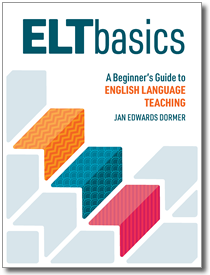 About ELT Basics About ELT Basics
ELT Basics is a book for those seeking a straightforward, practical, and foundational understanding of English language teaching. The book covers a broad range of important topics, such as what it means to “know” a language, how people learn new languages, and what teachers can do to teach English effectively.
Whether you’re looking for a basic understanding of English language teaching (ELT) or considering a career in language teaching but want to know more first, this book will teach you about language acquisition as well as how to plan, instruct, and assess multilingual learners of English.
The Activities
Language Tic Tac Toe: In this group activity, students must create sentences to place an X or an O on a tic-tac-toe grid.
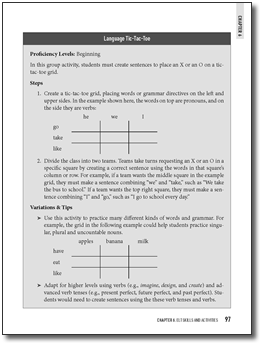
Relay Races: In this game, competing teams form relay lines. They run to the front and must match several words on cards with real items or pictures, saying the words as they match them.
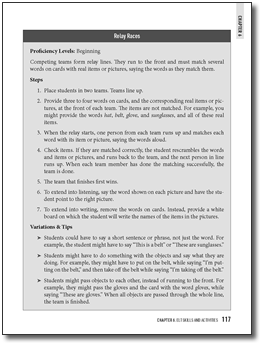
Purchase ELT Basics from TESOL Press.
These activities are for educational use only. Not for reproduction.
©TESOL International Association (2023).
TC Monthly Giveaway
The TESOL Connections Giveaway
is on a temporary hiatus.
Please check back next month!
TESOL Blogs Interested in writing a blog for TESOL?
Read the submission guidelines and send us your post!
Check out some of the most recent TESOL Blogs:
|
Tackling Complex Written Texts: 5 Strategies to Scaffold Reading, by Naashia Mohamed

Imagine the following scenario: Riku is a 14-year-old multilingual learner of English in secondary school in New Zealand. Although he can read simple texts, he is not yet able to tackle the more complex texts used for teaching in most of his Year 10 classes. Riku mostly understands the teacher’s explanations in class but he struggles to make sense of written texts and feels frustrated that he is not able to follow along. He spends a lot of time trying to comprehend each word in a text, using bilingual dictionaries and online translators, but this slows him down considerably. This week, in science he is learning about the atmosphere and our climate. The teacher has planned for the class to research how the changing climate is affecting us and has several print and online resources available to students.
If you were Riku’s science teacher, what would you do? Given his challenges with reading, what supports could you offer to make complex texts more accessible to him? Read more. |
|
International Exchange as Professional Development, by Laura Baecher

Guest Blogger: Kelli Odhuu
What changed my life? What experience gave me a greater understanding of another culture and my own culture? What experience allowed me greater insight into my students’ learning processes and improved my reflective abilities on my own teaching experience? The year I spent on a teacher exchange.
I received a grant from the U.S. Department of State for the English Language Fellow Program to teach undergraduates in another country. Being a Fellow was the best job I have ever had. I was a teacher to undergraduate students; a mentee of motivated and experienced English teachers; a tourist enjoying the new-to-me culture, food, and language; and an entertainer to the public, who enjoyed hearing me speak on such fascinating topics as English spelling absurdities. Read more. |
|
Reading a Gravel Driveway in Fredericksburg, Virginia, USA, by Spencer Salas

It’s just about the end of summer here in Charlotte, North Carolina, USA and almost time to start a new school year. For this month’s post, I’d like to write about a gravel driveway and reading.
My godparents had a small farm in Stafford County just outside Fredericksburg, Virginia, USA with hogs and chickens and hound dogs. There was a long gravel driveway that led to the two-story red brick house banked by two ditches, where orange lilies bloomed in late spring. In July and August, blackberries grew wild in the fields. We’d pick them for my godmother, who would make pies for us kids. Read more. |
TESOL Bookstore

Featured Resources from TESOL Press
ELT Basics is an invaluable resource for those seeking a straightforward, practical, and foundational understanding of English language teaching. This book covers a broad range of important topics, such as what it means to “know” a language, how people learn new languages, and what teachers can do to teach English effectively. Whether you’re looking for a basic understanding of ELT or considering a career in language teaching but want to know more first, this book will teach you about language acquisition as well as how to plan, instruct, and assess multilingual learners of English.
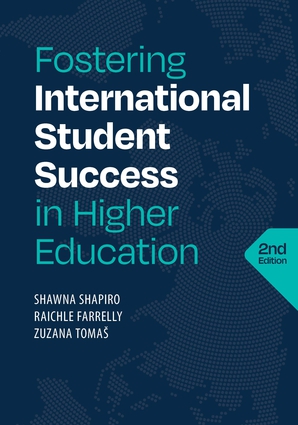 Fostering International Student Success in Higher Education, Second Edition Fostering International Student Success in Higher Education, Second Edition
Shawna Shapiro, Raichle Farrelly, Zuzana Tomaš
(Copublished by TESOL and NAFSA)
The increase in the number of international students attending English-dominant schools brings benefits as well as challenges for institutions. Shapiro, Farrelly, and Tomaš provide a lively, informative discussion that answers the questions instructors commonly ask when seeking to ensure success for these students: What do I do to help students be successful in U.S. academic culture? How can I ensure that the content for my course is comprehensible to students who are still learning English? How do I design assignments and assessments that are fair while still acknowledging the difficulty of doing academic work in a second or foreign language? How might I treat international students as a linguistic and cultural asset in the classroom, and help them to become institutionally integrated?
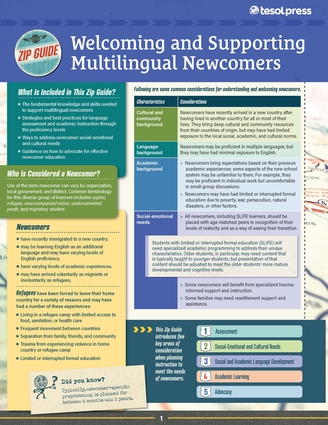 TESOL Zip Guide: TESOL Zip Guide:
Welcoming and Supporting Multilingual Newcomers
Amber Warren, Melissa Hauke, Jan By Ying Hui-Michael, Adrienne Johnson
Newcomers are students who have recently immigrated to a new country, may be learning English as an additional language, and may have varying levels of English proficiency. This guide introduces five key areas of consideration when planning instruction to meet the unique social-emotional, linguistic, cultural, academic, and programming needs of multilingual learners of English who are newcomers. It includes strategies and best practices for language assessment and academic instruction through the proficiency levels, and guidance on how to advocate for effective newcomer education.
|
 |
|
|
 |
| ESL Instructor; English Language Academy, The new American University of Iraq-Baghdad, Iraq
Open Rank Faculty Position in Translation and Interpreting; The Chinese University of Hong Kong, Shenzhen, Guangdong, China
Open Rank Faculty Position in English Studies Programme; The Chinese University of Hong Kong, Shenzhen, Guangdong, China
Open Rank Faculty Position in English Language; The Chinese University of Hong Kong, Shenzhen, Guangdong, China
English Language Instructor Position; Southern University of Science and Technology, Shenzhen, Guangdong, China
Want to post your open positions to Job Link? Click here.
To browse all of TESOL's job postings, check out the TESOL Career Center. |
 |
|
 |
| ADVERTISEMENT |
|
 |
|